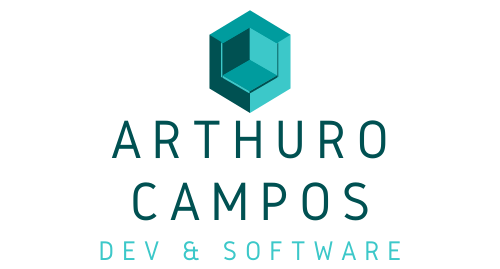The European Union’s groundbreaking approach to artificial intelligence regulation marks a significant shift in the digital landscape, with far-reaching implications for businesses worldwide. The EU AI Act establishes a comprehensive framework that classifies AI systems based on risk levels and imposes varying obligations accordingly, forcing organizations to rethink their technological strategies and implementation practices.
Adapting business operations to eu ai regulations
The EU AI Act, which came into force on August 1, 2024, introduces a tiered risk-based approach that affects both EU-based companies and international businesses whose AI systems or outputs reach EU markets. This extraterritorial scope means that organizations globally must evaluate their AI deployments against this new regulatory standard, with significant penalties—up to 7% of annual turnover—for non-compliance.
Compliance costs and resource requirements
Small and medium enterprises face considerable financial pressure, with compliance costs estimated between 1-3% of their annual turnover. These expenses cover necessary technical adjustments, documentation requirements, and governance structures. Organizations must implement robust data governance policies and establish comprehensive compliance frameworks while maintaining ongoing monitoring systems. Many businesses engage specialized Consebro advisors to navigate these complex requirements, particularly when dealing with high-risk AI applications that demand quality management, transparency measures, and human supervision protocols.
Strategic implementation timeline for businesses
Companies must align their AI governance with a phased rollout schedule. While the full application of the AI Act is set for August 2, 2026, certain provisions take effect much sooner. Prohibited practices become enforceable by February 2025, followed by codes of practice finalization by May 2025. Most general-purpose AI obligations activate by August 2025. Businesses should prioritize inventorying their AI systems, classifying them by risk levels, establishing stakeholder roles, assigning clear responsibilities, and creating playbooks for legal risks. This graduated approach gives organizations time to adapt but demands immediate action on high-risk applications and prohibited practices.
Long-term business implications of eu ai rules
The European Union’s AI Act represents a landmark regulatory framework that will reshape how businesses develop, deploy, and utilize artificial intelligence technologies. Coming into force on August 1, 2024, with full implementation by August 2026, this comprehensive legislation adopts a tiered risk-based approach that categorizes AI systems based on their potential impact. The Act’s extraterritorial scope means it affects not only EU-based companies but also UK businesses and others trading with or deploying AI solutions within EU territories.
The financial stakes are considerable. While the UK government estimates AI will contribute approximately £1 trillion to the UK economy by 2035, compliance with the EU AI Act could cost small and medium-sized enterprises between 1-3% of their annual turnover. Non-compliance carries even steeper consequences, with penalties reaching up to 7% of global annual turnover for serious violations.
For UK businesses specifically, the regulatory landscape is evolving. Although the UK currently lacks express general legislative acts addressing AI, a Labour government plans to introduce binding regulations for companies developing powerful AI models. The UK has also signed a legally binding treaty with the Council of Europe governing safe AI use, and the AI Safety Institute may become an independent body setting development standards.
Market opportunities under the new regulatory framework
The EU AI Act’s structured approach to regulation creates distinct market opportunities across different risk tiers. For minimal and limited risk applications, businesses face fewer regulatory hurdles while gaining the competitive advantage of operating within a clear legal framework that builds consumer trust.
The categorization system incentivizes innovation in lower-risk AI applications while establishing predictable compliance pathways for necessary high-risk implementations. Organizations that master the transparency requirements—including proper AI watermarking and documentation—can differentiate themselves in the marketplace through demonstrated regulatory adherence.
The prohibition of certain AI practices (effective February 2025) such as subliminal manipulation, exploitation of vulnerabilities, social scoring, and some biometric identification applications creates market gaps that ethically-designed alternative solutions can fill. Businesses skilled in developing compliant technology for sensible use cases will find growing demand for their expertise.
New market segments are emerging around compliance services, with opportunities for specialized consulting, auditing, and technological solutions that help organizations navigate the regulatory requirements. The need for robust AI governance frameworks, risk assessment methodologies, and monitoring systems represents a substantial business opportunity for service providers.
Competitive advantages for early adopters
Organizations that proactively adapt to the EU AI Act’s requirements position themselves advantageously against competitors who delay compliance efforts. By integrating regulatory considerations into their AI development lifecycle now, these early adopters minimize future disruption and costly retrofitting of systems.
The mandatory quality, transparency, and human supervision requirements for high-risk AI systems create differentiation opportunities. Companies that excel at implementing these elements can showcase their commitment to responsible AI, potentially commanding premium pricing for their more trustworthy solutions.
Forward-thinking businesses are establishing cross-functional AI governance teams that bring together technical, legal, and business stakeholders. This integrated approach enables them to identify compliance challenges early while simultaneously spotting innovative opportunities that align with regulatory parameters.
Data governance capabilities become a strategic asset under the new regulatory regime. Organizations with robust data management practices can more efficiently meet documentation requirements while maintaining data quality—a critical factor for both compliance and AI performance.
The implementation timeline creates a strategic window for businesses to gain first-mover advantages. With key prohibitions becoming effective in February 2025 and full implementation by August 2026, companies that align their development roadmaps with these milestones can capture market share while competitors scramble to adapt existing systems.
UK businesses face unique considerations given the evolving domestic AI governance landscape alongside EU requirements. Those that successfully navigate both regulatory environments can position themselves advantageously for cross-border AI trade, potentially serving as bridges between these significant markets.

